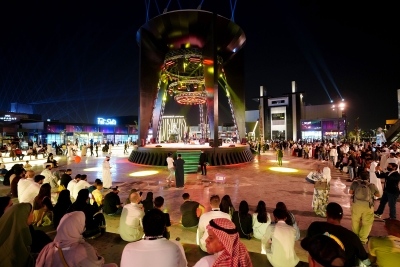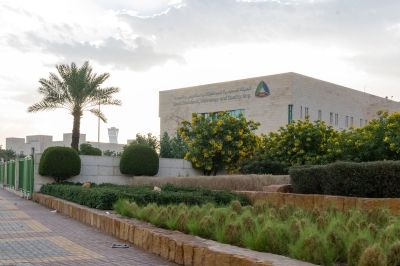
The Law of the Protection of Public Facilities in the Kingdom is a set of legal rules that regulate public facilities as outlined in the law itself or as specified by a decision from the Council of Ministers. These public facilities include: sewage systems, water services, stormwater drainage, electricity, telephone services, public roads, railways, and the facilities of King Abdulaziz City for Science and Technology.
The Law of the Protection of Public Facilities contains general provisions to ensure the proper functioning of each facility and to guarantee its protection from any harm.
Date of the Law of the Protection of Public Facilities
The Law of the Protection of Public Facilities was issued in 1984. It consists of sixteen articles. Before the issuance of the Law of the Protection of Public Facilities, the operation and management of public facilities were governed by provisions from other laws. These included several articles from the Telecommunications Law issued in 1978 and the Sewage Water Utilities Law issued in 1972.
Several articles of the Law of the Protection of Public Facilities were amended, including Article One in 2003, Articles Eleven and Thirteen in 2007, Article Five in 2017, and Article Twelve in 2023.
Characteristics of the Law of the Protection of Public Facilities
The Law of the Protection of Public Facilities is characterized by its provisions that ensure public facilities continue to operate without interruption and that services are not halted for any beneficiary. The law mandates that the relevant administrations and companies are responsible for protecting these facilities and promptly repairing any damage they sustain. Furthermore, it requires coordination between these entities to ensure that public facilities function smoothly, preventing service disruptions and minimizing harm to users.
Penalties in the Law of the Protection of Public Facilities
The provisions of the Law of the Protection of Public Facilities outline various motives for damaging public facilities. These include attacks on public facilities with the intent to benefit from them or the construction of private structures on public facilities. The provisions of the Law of the Protection of Public Facilities stipulate financial penalties for those who damage, vandalize, or obstruct public facilities from functioning. The penalties can include imprisonment for up to two years and a fine of up to SAR100,000.
Anyone who unlawfully benefits from public facilities or encroaches on public facility networks is subject to fines. This includes encroaching on railways, public roads, or their boundaries by seizing a portion of them, constructing structures on them, digging or cutting into their surfaces, shoulders, slopes, or parking areas, extracting soil from them, damaging signals or kilometer markers, or harming the industrial structures built for them, such as bridges and tunnels. The fine for such violations can reach up to SAR50,000.
The Law of the Protection of Public Facilities imposes a fine of up to SAR100,000 on anyone who causes damage to public facility installations, cuts, or disables them. If the party responsible for the damage is a contractor, the law permits a ban on future contracts with that contractor for up to six months. In the case of repeated offenses, the court may impose a longer ban, exceeding the maximum duration, provided that it does not exceed twice the initial limit. Penalties imposed are published in local newspapers at the expense of the convicted individual.
Additionally, any beneficiary of public facilities who facilitates unauthorized use of these services by others is fined SAR2,000. In the case of repeated violations, the law permits imposing a fine that exceeds the maximum limit, provided that it does not exceed twice the established maximum. The violator is required to compensate for damages caused to the facility or others, including the costs of repairing the damage they caused and compensation for any benefits lost by the facility or others. Compensation for lost water due to the violation is calculated per cubic meter based on rules set by a committee composed of the Ministry of Finance, Ministry of Municipalities and Housing, Ministry of Environment, Water and Agriculture, and Ministry of Energy. The competent authority may require the violator to repair the damage caused by their violation, or the authority may undertake the repairs at the violator's expense, recovering all costs associated with removing the violation and repairing the damage. If the violator does not pay, the costs are deducted from their entitlements with any government entity or collected according to the rules for collecting state funds.
A fine of up to SAR3,000 is imposed on anyone who tampers with water or electricity meters, public telephone devices, or their installations with the intent to disrupt their function or cause damage. Additionally, the same penalty applies to anyone who damages railways, public roads, or their boundaries by flooding them with irrigation or drainage water, or who performs actions that lead to their disruption, partial or complete inaccessibility, or endangers traffic.
A committee formed from the Ministry of Interior, Ministry of Municipalities and Housing, Ministry of Environment, Water and Agriculture, the Roads General Authority, Ministry of Energy, and Ministry of Communications and Information Technology, and approved by the Minister of Interior, is responsible for recording, verifying, and investigating violations of this law in accordance with the established procedures. The Board of Grievances is responsible for imposing the prison sentences stipulated in this law. Compensation and fines for each violation, within the limits specified in this law, are determined according to rules issued by the relevant minister. The decision regarding compensation or fines is issued by the minister or a delegate. Appeals against these decisions may be submitted to the Board of Grievances within sixty days from the date the violator is notified.
Related quizzes
Related articles

